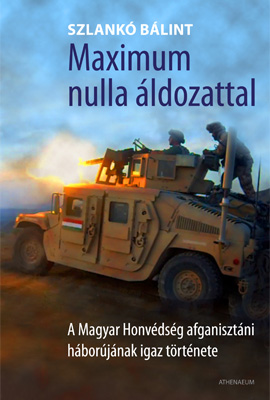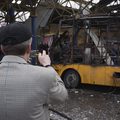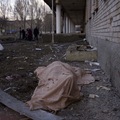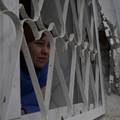World Politics Review, február 11.
HELMAND PROVINCE, Afghanistan -- For Gen. Nick Carter, commander of NATO forces in southern Afghanistan, and Gen. Larry Nicholson, commander of the U.S. Marines in Helmand, taking a walk late last month in the Garmsir district center's bazaar without a flak jacket was no big deal.
The northern bit of the district, known as the Snake's Head, has been relatively stable for about a year -- unusual for the troubled province of Helmand, which is home to a massive insurgency that makes it a dangerous place to visit even in heavily armored vehicles.
But perhaps the most noteworthy thing about the generals' promenade is that security in the area is no longer provided by NATO troops. That task has already been transferred to Afghan National Security Forces (ANSF), mainly the army and police.
While the ANSF has taken care of security in Kabul, the nation's capital, and other relatively calm areas since 2008, better-equipped and better-trained Western forces are generally needed to secure volatile areas in the east and south of the country. But security in the Snake's Head recently became the responsibility of the ANSF, with about 500 Afghan soldiers and policemen currently stationed in and around the district center, and about 7,000 in Helmand altogether.
Transferring security duties to the ANSF is now a central plank of NATO's strategy in Afghanistan. Even with some 20,000 Western troops in Helmand alone, there just aren't enough to both clear and hold ground, meaning that NATO must gradually hand over territory to ANSF forces after clearing it of insurgents.
Tenuous Handover
To be sure, the security handover in the Snake's Head isn't nearly complete. Although there are no longer any Marine rifle companies there, about 400 Marines remain, fulfilling various other duties, such as training and mentoring. They are heavily armed, with air support as close as 15 minutes away, providing a backstop to the Afghan forces if something goes wrong.
Marines also still patrol together with the ANSF, at least once a day. And during their tour, Gens. Carter and Nicholson were protected not just by ANSF personnel, but by American and British troops as well as European private security contractors.
And the Snake's Head is not without tensions. In mid-January, bloody riots broke out over rumors that American troops had desecrated the Quran. (The coalition denies the allegation, claiming the rumor was Taliban propaganda.)
But Marine commanders held even this incident up as proof of the ANSF's growing ability to provide security for their own country. Although Marine snipers shot and killed at least one armed Afghan when the rioters attacked their compound near the Garmsir district center, they say security was eventually restored by the ANSF in cooperation with local elders.
"We never even stepped out of our compound," says Gunnery Sgt. John Leroy of the 2-2 Marines, who is assigned to train and mentor the local Afghan police. He lives and works with them on their compound with 17 other Marines.
Gunnery Sgt. Leroy says the police are for the most part self-sufficient, but adds that they are still unable to devise detailed patrol plans for themselves. He said their biggest problem was logistics, and that they were often short on fuel.
Most of the Garmsir police have already been through an 8-week American training program. But many policemen elsewhere are put on duty without any training whatsoever - and it shows: It is not unusual to see policemen wandering around with the safeties of their AK-47s switched off, and corruption persists.
As for the army, generally acknowledged to be head and shoulders above the police, plenty of questions also remain, especially when it comes to logistics, equipment and discipline. Interestingly, most Marines who have served in Iraq compare the Afghan soldiers very favorably with the Iraqi Army.
"It's a good, committed fighting force, and they are determined to develop," says Lt. Troy Van Zuckermann, an army mentor with the 2-2 Marines. But if most U.S. officers sound quite positive, the lower-ranking Marines generally held less favorable opinions, while views about the Afghans' discipline vary widely.
The Afghans themselves acknowledge their shortcomings, but they mostly complain about their equipment. "We have nothing. No armored trucks, no air force, no proper accommodation, no night-vision equipment, no GPS, no maps," says 1st Lt. Abdul Alim of the 4th battalion, 205th Corps of the Afghan army, stationed in Garmsir. "Only ancient radios and old M16s that you have to clean all the time, otherwise they jam."
Meanwhile, desertion is a major problem, with up to 20 percent of the army AWOL at any given time. This is not entirely surprising. Even though pay was recently raised to $160 a month ($240 with combat bonus), it remains low. And because soldiers are routinely deployed well beyond the target date of six months -- and sometimes as long as 11 months -- many simply choose to disappear, pushing the attrition rate to about 3,000 per month.
It is anybody's guess if these forces can stand up to the Taliban unassisted. But some American officers hope that cash-for-works programs can turn enough people away from the Taliban so that the Afghan army will never really have to face them. The strategy is based on the belief that most low-level insurgent fighters are fighting for money, not ideology.
Cpt. Jason Brezler, Lima company, 3rd battalion, 4th Marine regiment, in Now Zad, Helmand, estimates that up to 15 percent of the 500 men he pays to clear the rubble away in Now Zad are former Taliban fighters. "If you can give these people work, they won't go back to fight, and then the Taliban is dead," says Brezler. "Why would they go back to fight? For Allah's name? Come on."
A good part of NATO's strategy depends on Brezler being right.







